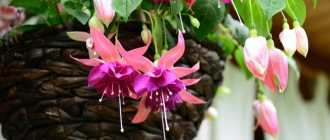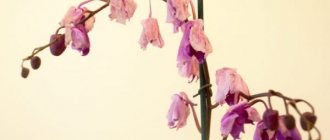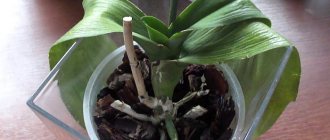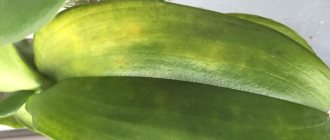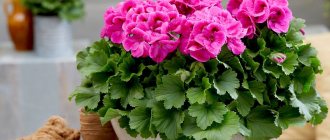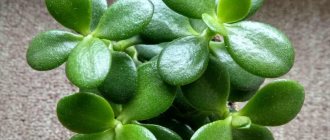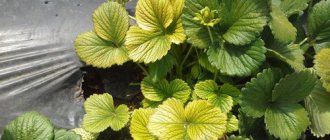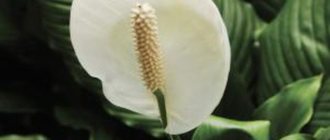Natural process
The orchid as a tropical flower (genus Phalaenopsis) has many varieties and each differs not only in appearance or color of buds, but also in its life cycle. The latter, with an eye to climatic conditions, involves shedding leaves.
That is, if the greenery of your orchid suddenly begins to fall off, then it is possible that the primary source of the problem is its life cycle . Some species shed their leaves within a year after purchase, while others lose their leaves after 3-5 years.
All your efforts in terms of increasing/decreasing temperature, frequency of watering and applying fertilizers will not give any significant results. You just need to accept it and wait for the flower to form new leaves. If the gardener closely monitors the orchid, then he also tracks the age of the foliage.
Important! Before purchasing a plant, be sure to check with the seller for the exact name of the species and how often it sheds greens.
If an orchid begins to shed its leaves at the moment of rapid growth, then this is abnormal. During this period, greenery is necessary for the flower for complete photosynthesis, oxygen saturation and evaporation of excess moisture. So here we have an exacerbation of one or even several of the problems described below.
Watering
Under no circumstances should you oversaturate the soil with moisture: the roots will begin to rot and the leaves will fall off. But the lack of fluid also has an extremely negative effect on the condition of the root and aerial parts. If a flower experiences a moisture deficiency, then soon all the leaves of the orchid will fall off . The greenery will try with all its might to retain water, and evaporation will stop working altogether.
You need to water your orchid regularly and without fanaticism, and not just when you remember that you have it. Here it would also be useful to clarify the subspecies: both moisture-loving types of orchids and “drier” types are found on sale.
Important! Make sure that the soil is slightly moist at a depth of 2-3 cm and do not allow the soil to dry out, compact or fall off.
It is best to water an ordinary orchid with boiled water at room temperature. This will slow down the development of functional chlorosis. Cold liquid can cause the roots to freeze, and all the leaves of the orchid will fall off again. If the plant is moisture-loving, then you can periodically give it a warm shower using a spray bottle. To prevent moisture from stagnating in the pot, be sure to provide drainage holes.
If you flooded the flower and brought it to rotting roots, then the soil must be replaced. The orchid is carefully removed from the pot and completely cleared of soil. Using garden tools, it is necessary to remove not only rotted roots, but also those areas on which a slimy coating has appeared.
Ideally, the cuts should be rubbed with activated carbon, then the plant should be placed in new soil and left alone for several days. After rehabilitation, the first watering is carried out no earlier than 4-5 days later.
Improper care
Newcomers are usually afraid of making the wrong move, which will lead to the death of the culture.
But don’t be afraid, in fact, care is not very difficult. The main thing is to follow the recommendations and not touch the pot with a flowering plant unless absolutely necessary. Phalaenopsis really does not like familiarity and frequent moving from one windowsill to another.
There are several reasons for this phenomenon; if it is not possible to immediately determine the source, then you will have to use the method of elimination, scrupulously checking all points of care, paying attention to changes in the condition of the flower.
Temperature
It is very important for supporting long-term flowering or stimulating the flower to form a peduncle. Comfortable heat level is kept between 22-26 °C. If the flower is healthy, but does not even think about blooming, it is transferred to a cooler place with a temperature no higher than 16-18 and kept for at least 2 weeks.
Such a shock drop will lead to activation of processes in the roots, and watering with a solution of succinic acid stimulates growth and the beginning of flowering.
Lighting
The health of the orchid largely depends on its level.
- It quickly reacts to the lack of sunlight by shedding the bulk of its leaves.
- A direct stream of light will cause burns to the leaf plate. The leaf will die or be sick for a long time.
The best option is to place the flower on a south-facing window with the glass covered.
Diffusing tulle or blinds are often used. If there is insufficient lighting, you will have to install phytolamps. Their choice is quite wide, while achieving an interesting decorative effect that decorates the room.
The plant will survive violations of the watering regime, humidity or soil composition; a lack of light is detrimental to it.
Dry air
Monitor air humidity
The orchid feels good at a humidity level of 60-70%, which is unacceptable for residents of an apartment or private house. In greenhouses, automatic microclimate maintenance systems are installed; at home, you will have to be content with daily spraying from a spray bottle with warm, settled water.
The flower loves the shower, but then it needs to be left in the bathroom until the leaves dry naturally. Microscopic droplets on the plates cause sunburn.
When the air is too dry, the orchid sheds its leaves to reduce moisture loss; when indicators acceptable for it are restored, new leaves begin to form.
Watering
All types of orchids are epiphytes, receiving water not from the soil, but from the environment. Therefore, watering in the usual sense of the word is not carried out for them. Overmoistening of the roots leads to their rotting, and contact with a leaf rosette provokes the shedding of buds and yellowing of the leaves.
To avoid negative consequences, it is worth adopting a very convenient method. When the earthen ball dries out, the pot is simply placed in a pan of water for several hours. Through the holes in the bottom, the flower itself will take as much as it needs.
Sometimes overhead watering is carried out, but in a very thin stream and along the inner wall of the pot.
Fertilizers
For feeding, complex liquid or granular preparations for cacti and orchids are used. Agricola and Good Power have proven themselves very well.
It is worth focusing on the following features:
- in spring, attention is paid to nitrogen as part of complex fertilizing;
- in summer, the frequency of fertilizing is 2 times a month;
- when the first bud appears, root feeding is stopped completely;
- during flowering, only foliar support is carried out by spraying on the leaves;
- During the dormant period, fertilizers are not applied.
Lighting
Another reason for the falling of flower leaves is lack of lighting. The orchid is extremely demanding of diffused sunlight. In the summer months there are no problems with this due to longer days, while in winter the plant suffers from a lack of light.
During this period, the flower needs an additional source of photosynthesis. It is best to organize artificial additional lighting with special LED lamps. The latter work in the yellow or white color range. Red, blue or green shades are not allowed here.
Separately, it is worth mentioning direct sunlight. They can also cause leaf drop. In its usual habitat, which is the tropics or subtropics, the orchid receives diffused light. Direct sunlight can cause severe burns. The leaves turn yellow, after which they simply die.
Important! If you take the plant out onto the loggia in the summer, be sure to cover it with gauze or a mosquito net. This way you will protect the orchid leaves from burns.
So the quality of light must be kept under control. Scattered rays can be organized using blinds or tulle curtains.
How to save
Summing up why all the leaves of the orchid have fallen off and what needs to be done to save the flower, let’s look at the main points:
- If the lighting is incorrect, you need to change the location of the flower or use additional means. So, if there is insufficient lighting, fluorescent lamps or phytolamps should be added. The plant is protected from exposure to direct sunlight by special nets that create shade;
- the flower must be well wrapped to prevent hypothermia;
- monitor the root system: after watering it is especially sensitive to cold air;
- after a change of location, the plant requires a period of adaptation and good care conditions.
- in winter, comfortable temperature is +20…+25 °C;
- in summer the air temperature should vary between +25…+28 °C;
- For abundant flowering, a slight difference in day and night temperatures of 5–7 °C is needed.
Transferring a plant from a store to an apartment at sub-zero temperatures can trigger the shedding of not only leaves, but also buds. When purchasing in winter:
Temperature violation
The temperature of the apartment is well suited for growing flowers. They do not have a pronounced rest period. In order for the plant to feel good, it is necessary to observe the temperature regime:
If the ambient temperature is above +30 °C, the upper parts of the flower heat up. The roots cool down, stop consuming the required amount of water, and the leaves do not receive nutrients. As a result, dullness, yellowing, and fading are observed. Everything happens quickly, within a few hours.
It is important to ensure that there is no prolonged drop in temperature , which can be fatal. When exposed to prolonged low temperatures, the roots stop absorbing moisture, the leaves lose turgor and fall off.
Fertilizers
Incorrectly selected fertilizers can cause problems with leaves. The answer to the problematic question lies at the purchase stage. Sellers, for the sake of rapid growth, as well as acceleration of sales, oversaturate the soil with nutrients and strong stimulants.
The plant quickly grows tall and acquires extensive foliage. But this approach also has a downside. After some time, the flower begins to wither from excess feeding, because it has exhausted all its resources for the formation of the above-ground part. And as a result, even seemingly healthy green leaves begin to fall off.
To normalize the condition of the orchid, it is necessary to place it as close as possible to the light source and completely abandon artificial fertilizers. After about a couple of weeks, you can begin to fertilize the soil with liquid fertilizers rich in nitrogen elements.
Important! Never oversaturate the soil with nitrogen fertilizers. This will delay the onset of flowering and make it more difficult to transport water and nutrients to the root.
The mirror problem is the lack of fertilizers . If the leaves of a flower begin to turn yellow and fall off, this indicates a potassium deficiency. In this case, mineral fertilizing cannot be excluded, but on the contrary, provide the orchid with fertilizers rich in iron and potassium. It would also be a good idea to completely renew the soil.
Orchid root is especially sensitive to elements such as nitrogen, potassium and phosphorus. If you dose them incorrectly, leaf fall will become a natural phenomenon. The root will receive a chemical burn and will no longer normally absorb nutrients from the soil. As soon as a couple of green leaves have fallen, you need to reconsider the scheme for applying mineral fertilizers.
Why do orchid leaves and flowers fall off?
Leaf loss is a fairly common problem when growing orchids. When such a phenomenon occurs, the first step is to find out the reason for the fall - more on that later.
Natural process
In orchids, certain physiological processes occur at certain periods of time, determined by the life cycle of the plant. The duration of this cycle is also different for different types of flowers, for example, for the most common type of domestic orchid - phalaenopsis, it is 2-3 years.
This means that by 2–3 years the life of the leaves has expired, and the plant needs to be revived.
Accordingly, if, with proper care, the orchid’s leaves still fall, then this is not a cause for concern - this is a natural change in physiological periods. After some time, the plant will form new leaves and recover. In this case, caring for the orchid is expected to be normal.
Did you know? Cut orchid sprouts retain their freshness in a vase for about 3–4 weeks.
Improper care
Loss of leaves usually results from errors in plant care. Let us consider in detail the main mistakes in growing orchids that lead to such consequences.
Temperature and lighting
An orchid, like any living organism, has the ability to self-regulate. However, this ability is limited, and at a certain point the flower can no longer protect itself from the abundance of light or uncomfortable temperature, and the orchid sheds its foliage.
White spots on the leaves and subsequent frostbite indicate low temperatures around the plant. But if they look lethargic, “baked,” this is a sign of an unacceptably high temperature.
An indicator of excess light burning the leaves is their darkening or yellowing.
Fallen flowers and drooping leaves are a sign of lack of light.
Dry air
During the cold season, in order to raise the air temperature around the plant, a container with a flower is often placed near heating devices. And this leads to the fact that heating devices, drying the air, reduce the percentage of humidity in it, which, in turn, has the most negative effect on the plant.
Moisture evaporates both from the substrate and from the surface of the leaves, as a result of which the plant rapidly loses moisture. To survive such stress, the flower is forced to defend itself by shedding its leaves.
It will also be useful for you to know why orchid leaves wither and turn yellow.
Watering
Either too little or too much watering can cause a plant to shed its leaves.
With excessive soil moisture, the root system of the flower develops an oxygen deficiency, which leads to the proliferation of putrefactive bacteria, and subsequently to the loss of leaves by the flower.
The following signs indicate overwatering:
- A change in color not only of the leaves, but of the entire plant.
- Softness and moisture of the leaves, the presence of black spots on them.
- Darkening and blackening of roots.
- The plant is easy to remove from the pot.
A change in the color of the plant’s leaves from green to yellow, and wrinkled rhizomes indicate insufficient watering.
Lack of moisture upsets the metabolism: the flow of nutrition to the stem and leaves is inhibited, which leads to their yellowing and falling off. Important! The absence of drainage holes in the container with the flower leads to stagnation of moisture and, as a result, rotting of the roots.
Fertilizers
One of the reasons for the fall may be improper fertilizing: the result is a deficiency or, conversely, an excess of fertilizers. Too high a concentration of fertilizers leads to the deposition of mineral salts on the soil, which does not allow the roots to absorb moisture.
This will be indicated by softening and yellowing of the leaves and, if proper measures are not taken, by their falling off.
In addition to the above, the following will also help lead to the loss of leaves by an orchid:
- Unsuitable container. A pot that is too small will compress the root system, and the incoming moisture will not have time to leave.
- Loss of soil drainage capacity and proper level of aeration.
- Mechanical damage to the root system.
The consequence of such problems is waterlogging of the soil, rotting of the roots and falling leaves.
Important! Orchid does not tolerate drafts
—
this leads to hypothermia and wilting of the flower.
Wrong choice of neighbors
The proximity to plants from the Agave, Araucariaceae, and Pepper families can also provoke abscission.
Also, leaf fall is possible due to the close proximity to cacti with their heavy energy.
Diseases or pests
Deterioration in the health of an orchid may be a consequence of disease or pest activity.
Pests that appear on the flower infect the orchid with infectious diseases, and the weakened flower is not able to fight with full force, and accordingly, the leaves fall off.
The appearance of a thin cobweb on the inner surface of the leaf indicates an attack of the plant by a spider mite.
Yellowing of leaves and the appearance of yellow spots on their green surface may indicate attacks by aphids, nematodes or scale insects.
It will also be useful for you to know what to do if the unopened buds of an orchid fall off.
Orchid diseases:
- Gray rot - this is evidenced by the covering of aerial roots, flowers and leaves with a gray fluffy coating.
- Anthracnose and powdery mildew - symptoms are black spots with a yellow or fluffy pink coating.
Priming
If an orchid drops its leaves, then one of the reasons may be improperly selected soil. Caked or overly compacted soil can cause roots to rot or dry out. If you get a flower with improperly formed soil, the plant needs to be replanted.
For novice gardeners, there is a huge selection of soil in specialized stores specifically for orchids. Experts prefer to prepare the soil for their flowers themselves.
Approximate composition of a good substrate:
- expanded clay;
- pine bark;
- White sand;
- sphagnum moss;
- perlite;
- fern;
- pumice.
Important! To organize a drainage layer (3-5 cm), only expanded clay and pumice are used.
You can change the percentage of ingredients depending on the subspecies of the flower.
Temperature
All types of orchids can be divided into three temperature groups - warm, moderate and cold. A good half of the subspecies belong to the last two. An indicator of an incorrectly chosen temperature regime is precisely the falling leaves of an orchid.
“Warm” species prefer temperatures around +15-18⁰С. In this case, daily fluctuations should not exceed 5⁰C. For example, if at night the temperature drops to +18⁰С, and during the day rises to +25⁰С, then the flower may get sick.
Important! Check with the seller which temperature group the flower belongs to. It is better to avoid purchasing “warm” subspecies that are picky about the quality of the microclimate. It is very difficult to create ideal conditions for them.
Orchids of the moderate group feel great at +12-22 degrees and no longer react so critically to daily fluctuations. “Cold” species can easily withstand minimum temperatures up to +7⁰С and maximum temperatures up to +22. Daily fluctuations are also treated stoically.
Pests of Phalaenopsis orchids, combating them
Let's take a closer look at the most common orchid pests.
Shields
The pest loves heat very much, so the plant is at risk if it is in a too hot place, in conditions of low air humidity or insufficient watering. You can eliminate scale insects by treating the orchid with a soap solution. To prevent scale insects from appearing in the future, move it to another room and provide high humidity (for example, spray the plant with water from a spray bottle more often).
Growths on the leaves of the plant are a sign of scale insect infection.
Mealybug (pemphigus)
The usual cause of pest appearance is dry air. Treatment with a soap solution is an excellent way to get rid of scale insects, and only in case of severe infestation do you have to resort to the use of special chemicals.
- First of all, isolate the infected orchid from other plants. Alas, you will have to remove all the flowers and buds. Cut off severely affected leaves.
- Using a cotton swab dipped in a soap solution, carefully wipe the orchid leaves, especially in hard-to-reach places where insects can hide.
- Since pests can be found not only on the plant, but also around it, disinfect the place where the orchid stood - a windowsill, a bedside table, a table.
- Now you need to treat the plant with insecticides. The drugs Malathion, Dimethoate, Parathion and Diazinon cope well with the problem. Spray the plant with one of them 3-4 times with an interval of 10 days.
Aphid
Insects of this species love to settle on leaves and flowers, and with their vital activity they provoke the appearance of fungal and viral diseases. If you find these pests on an orchid, know: the plant is in conditions of unsuitable temperature or significant temperature changes. Move the orchid to a room where the temperature is constant within the required limits.
Such a sticky coating on orchid leaves may indicate an aphid infestation.
Folk remedies have proven themselves well in the fight against aphids.
- Wash the leaves and stems of the flower thoroughly with warm water. You can use a mixture of water and milk in a 1:1 ratio. Please note that you will have to remove flowers and buds. The method is effective if the damage is still minor.
- Almost all types of insects cannot tolerate a solution of laundry soap due to its antiseptic effect. 1 tablespoon of soap shavings or dishwashing detergent diluted in a liter of warm water will get rid of aphids if you wash the plant with this solution.
- Pour a handful of citrus peels with a glass of hot water and leave for 72 hours. Spray the resulting solution from a spray bottle onto the orchid every 4–5 hours during the day. The effect will be enhanced if you place the soaked peels on the substrate.
- If the aphid infestation is already quite severe, use onion water. Grind a large onion into a pulp, pour boiling water over it and leave for 6–8 hours. Strain the solution and spray the orchid with it for 3 days, several times a day.
Fringed-winged or bladder-footed thrips
Insects appear when the orchid is kept in high temperature conditions. First of all, move the plant to where it will not be hot. Provide isolation from other plants.
Place the flowerpot with the orchid in a bathtub or wide vessel, and thoroughly rinse the entire plant from the shower with warm water. Although this will not completely destroy thrips, it will reduce their purity.
Carefully cut off the damaged areas on the leaves to healthy tissue, sprinkle with crushed activated carbon.
To combat thrips, you can use folk remedies.
- Mix 2 tablespoons of olive oil in 1 liter of water. Apply the solution to the orchid using a spray bottle. The oil film will block thrips’ access to the leaves, and a weak concentration of the emulsion will not harm the surface of the plant.
- Dilute 15 g of grated laundry soap in 1 liter of warm water. Rinse the leaves and trunks of the orchid thoroughly with this solution.
- Make garlic tincture. Chop 4-5 cloves of garlic, pour in 0.5 liters of boiling water and leave for 4 hours. Filter the tincture and apply the liquid to the leaves of the plant with a brush.
You can destroy thrips on an orchid using folk remedies
Now there are many special drugs designed to combat thrips, for example:
- CELAFLOR Roxion D;
- CELAFLOR Schädlingsfrei Neem;
- CELAFLOR Schädlingsfrei Careo Konz;
- Bayer Lizetan-Plus-Zierpflanzenspray;
- Bayer Lizetan-Combigranulat;
- NEUDORFF Promanal AF Neu;
- NEUDORFF Spruzit-AF Schädlingsfrei;
- pyrethrum powder;
- Vertimek;
- Nurrell-D.
When treated with these substances, the orchid should be in partial shade for 2 weeks. The procedure should be performed every 3–7 days.
Red flat tick
The appearance of white or yellow spots on the leaves of the orchid, unfortunately, indicates that the pest has already thoroughly settled in the plant. The only way to combat it is to treat the entire surface of the plant with the avermectin group: “Fitoverm”, “Aktofit”, “Vermitek”. They are harmless in indoor orchid growing conditions, but have no effect on mite larvae and eggs. These products should be used 4 times with an interval of 3-4 days.
The drug "Apollo" has proven itself well in the fight against flat mites. It is not only harmless to humans and does not cause damage to the orchid, but also destroys mites up to the egg stage.
Whiteflies
Eliminating whiteflies is difficult and can take several weeks. Spray the orchid with insecticides once every 3 days. Affected areas of the plant must be removed. For preventative purposes, spray other plants near the diseased orchid to prevent the whitefly from moving onto them. Treatment with a soapy solution helps a lot - all insects are afraid of it.
Spider mite
You can get rid of the pest by thoroughly treating the plant with a soap-alkaline solution. Wipe the leaves and trunk carefully so that soapy water does not get on the roots.
You shouldn’t place high hopes on chemicals: spider mites quickly develop immunity to them. We'll have to work on several fronts.
Spider mites quickly develop immunity to chemicals
If cobwebs are noticeable on the orchid, water it thoroughly, seal it in a plastic bag and leave for 3-4 days. In such a “greenhouse”, air humidity will increase and will be maintained at a level necessary for the death of most of the tick population. At the same time, the orchid should not be in a place that is too lit, otherwise it may disappear.
After such manipulations, the remaining ticks will be too weakened to develop immunity, and you can “finish them off” with chemicals. The following drugs are recommended:
- Axoris Insekten-frei für Orchideen;
- Bayer Spinnmilbenspray;
- NEUDORFF Spruzit AF Schädlingsfrei;
- Metaldehyde;
- Thiophos;
- Aktellik;
- Neoron;
- Nurrell-D.
It is better to use two drugs with different active ingredients at the same time.
Dry air
In order to maintain optimal temperature conditions, many place orchids near heating devices and central heating radiators. This is a mistake, because as a result of such proximity the air dries out, leaving the orchid without leaves.
The fact is that water evaporates not only from the soil, but also from the greenery itself. The plant loses moisture and the leaves begin to gradually die. The answer to this problem is to periodically spray the orchid with water at room temperature from a spray bottle.
Moist moss placed near the flowerpot also helps. It is able to concentrate moisture in itself and share it with other plants. The main thing here is not to overdo it, otherwise fungus may appear.
Compatible with other colors
The death of leaves on an orchid can be caused by neighboring plants. The flower is not particularly picky about its fellows, but still cannot tolerate some representatives of the flora in principle. Therefore, it is better to keep her as far away from them as possible.
Plants incompatible with orchids:
- Yucca.
- Araucaria.
- Cactus.
- Peperomia.
- Cordilina.
Here it is important not just to move or rearrange the orchid a little further from the above plants, but to separate them radically - by rooms or completely abandon one of the flowers.
Rescue a flower
Methods for saving an orchid are symmetrical with errors in care. Before resuscitating an orchid without leaves, you need to find out what exactly was done wrong. This will help you avoid similar mistakes in the future.
- If the lighting is incorrect, change the location of the flower. If the leaves have fallen off, check that there is at least 12 hours of daylight. If there is not enough light, then additional lighting is organized. If the flower is constantly exposed to direct sunlight, then it is protected from them.
- If watering is not organized correctly, it is necessary to restore the proper regime. It depends on the phase of the life cycle in which the plant is located, as well as on the time of year. At elevated summer temperatures, as well as during the heating season, the soil is sufficiently moistened. The test is carried out by touch and visually.
- If an overdose of fertilizers occurs, the roots of the flower are washed under running water and then moved to a bright place to activate photosynthesis. The next feeding can be done in about a month and a half.
Important! Fallen leaves do not need to be left in the pot. They are no longer needed.
Gardeners should pay attention to the flowers that are located next to the orchid. There are some plant species that have a negative effect on orchids, such as cacti. Their presence can cause the leaves and flowers to completely fall off.
In this article, we discussed ways to solve the problem if all the leaves of an orchid have fallen off, listed possible errors in care and methods for eliminating them.
What you should pay attention to
If the leaves begin to wither and fall off closer to the base of the peduncle, then this may be normal. Here we have the normal aging process. There is nothing you can do about this and there is no need to worry about it: the issue will resolve itself.
Examine the leaflet carefully. If the base that was attached to the stem is rotten, then it is necessary to check the roots, and at the same time the soil moisture. This condition of the leaves indicates waterlogging of the soil.
Lumps or plaque on the greens indicate a fungal infection. It appears either from the same excess moisture or from neighboring plants. To minimize the consequences, it is necessary to reduce soil moisture levels and use fungicides.
When the leaves become covered with multi-colored spots and then begin to fall off, this indicates that the flower has been infected by a virus. Treatment must be carried out immediately, otherwise the orchid will die in the shortest possible time. Fortunately, there are plenty of effective and inexpensive preparations specifically for orchids in flower shops.
If the rhizome and stem have received serious damage from the virus, then there is no point in saving such a flower. You will only waste your money on medications. It is much more practical to reproduce the old one or even buy a new one. Let us consider separately the root system of the orchid with an eye to our problem.
Green root
If the orchid has completely lost its foliage, but the root has not withered and remains green, then there is still a chance to revive the flower. In this case, photosynthesis and moisture saturation stop, but the plant still lives. By promptly identifying the cause, successful rehabilitation can be achieved.
A healthy rhizome indicates that the flower can still feed itself through the soil. Nitrogen supplements and fertilizing help here. It is undesirable to use strong growth stimulants. An adult plant survives any diseases noticeably better. Nutrients have already accumulated in its stems and roots, while in young orchids with a weak root system and a modest above-ground part, the problems are much more acute.
Video “Planting orchid roots without leaves”
Video about how to plant an orchid without leaves and what to do next.
Presence of pests or diseases
With serious and not so serious violations of care, orchids can be affected by various diseases, and can also be attacked by parasites. Signs of deterioration in the condition of a flower can be very diverse: yellowing of leaves and their falling, lethargy, the appearance of spots of various colors and much more. The manifestation of certain symptoms of plant malaise depends on the causative agent of the disease or the parasite that attacked the flower. It is worth noting that some diseases and pests are very difficult to treat. If they were identified in the later stages, then the chance of saving the orchid is minimal. Therefore, it is easier to prevent such negative developments than to eliminate them.
To identify even the earliest symptoms of damage to representatives of indoor flora, flowers must be periodically inspected. If there are no visible reasons for leaf fall, you need to check the root system. Many pathogenic microorganisms, like insect pests, attack the roots. Because of this, the underground part of the plant becomes unable to perform its functions. As a result, the above-ground part of the flower begins to experience a lack of nutrients, which leads to the falling of leaves.
Treatment of microbial or fungal infection is still effective. In this case, infectious and viral lesions are practically not eliminated. The only way out is to destroy the infected plant.
It should be noted that an attack by pests or damage by pathogens is always preceded by a violation of care. Most often, the following points lead to such a negative outcome:
- excessive accumulation of moisture in the substrate. Watering orchids should be done when the soil in the pot is dry. When a large amount of moisture accumulates in the substrate, conditions are created that are optimal for the development of various types of infections, as well as the appearance of parasites;
- frequent temperature changes. They make the plant vulnerable to rot;
- increased humidity in the room.
Most often, if care is not taken care of, the orchid begins to suffer from the following types of diseases:
- root rot;
- gray and black rot;
- fusarium rot;
- leaf spot;
- powdery mildew;
- anthracnose
In addition to the above ailments, a tropical beauty at home can be attacked by pests such as whiteflies, woodlice, slugs, midges and beetles. The most harmful parasites will be ticks. They are very difficult to see as they are very small.
Withered root
If the flower has lost all its greenery, and the root has withered, then you need to seriously think about replacing it: resuscitation will be very problematic, and the chances of success are minimal. The fact is that a dried out root system indicates the impossibility of self-feeding. The plant simply will not be able to grow foliage and stems, no matter how you fertilize it.
It is also not possible to propagate a dying flower. You can try to inspect the root collar. If you see small green buds on it, then the chances of resuscitation increase slightly. Otherwise, trying to restore the flower is meaningless.
To restore an orchid, you need a special fertilizer with a high nitrogen content, which must be combined with strong growth stimulants. The latter significantly speed up the resuscitation process and within a day the result will be visible. But again, the chances that an orchid will recover with a dried root system are extremely small.

